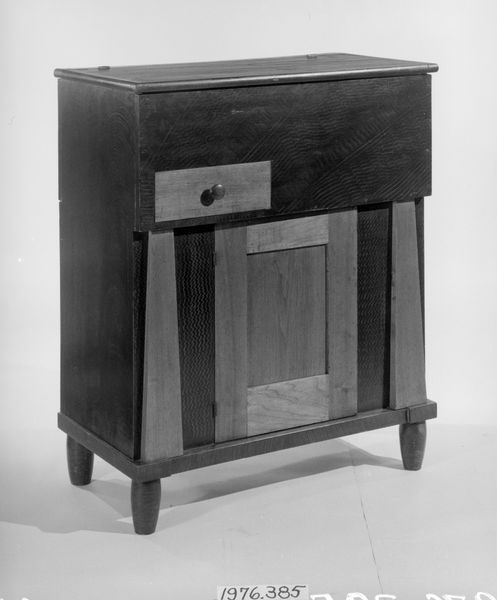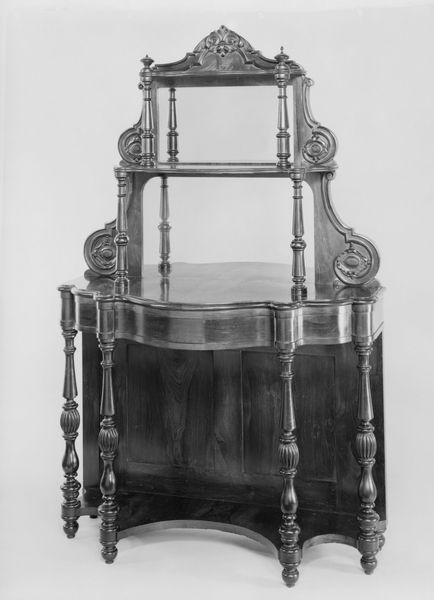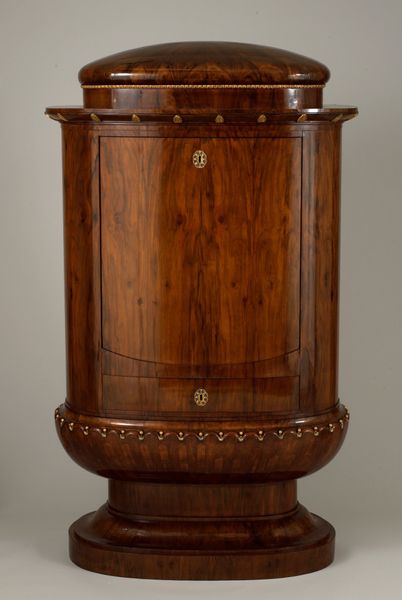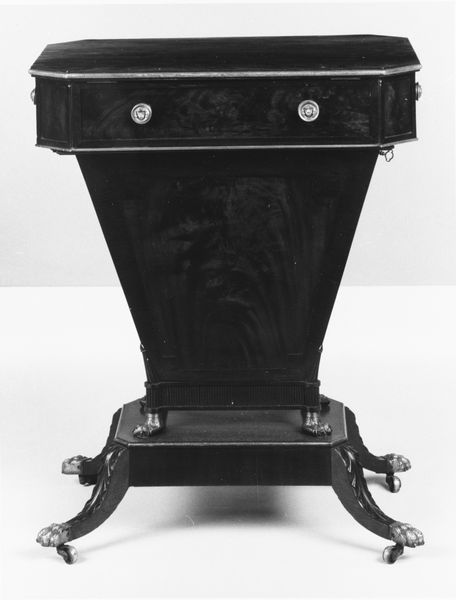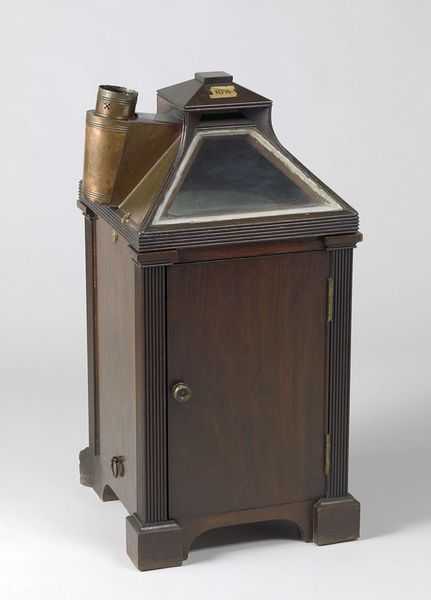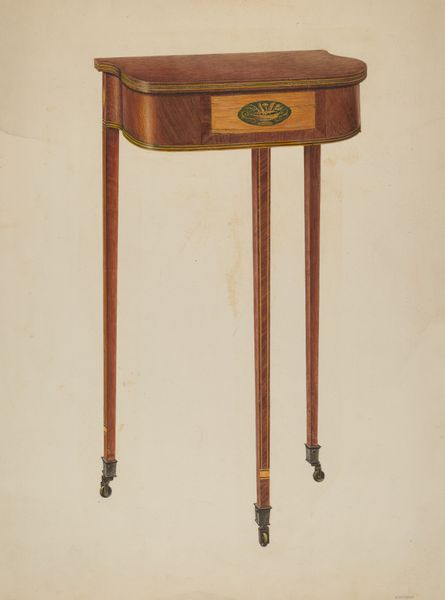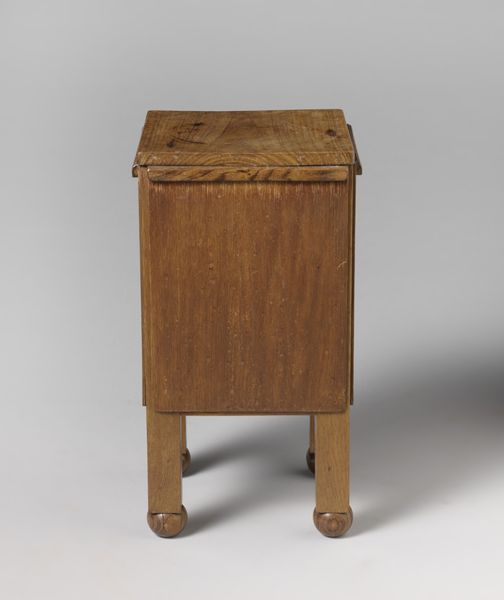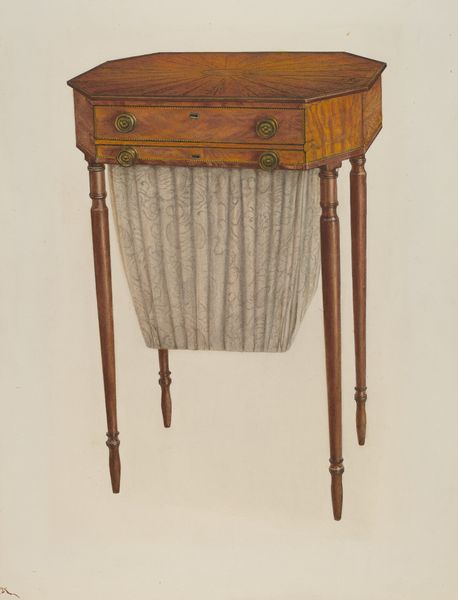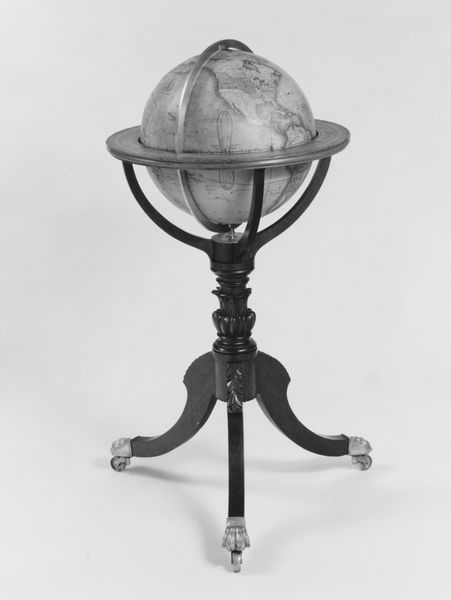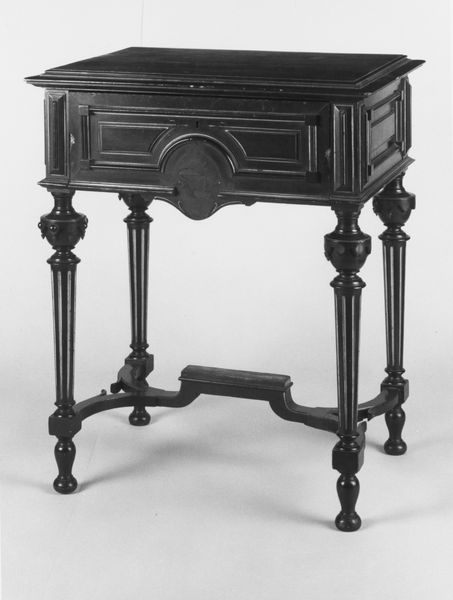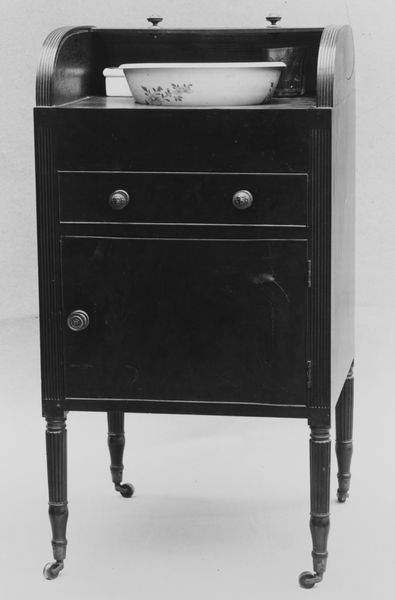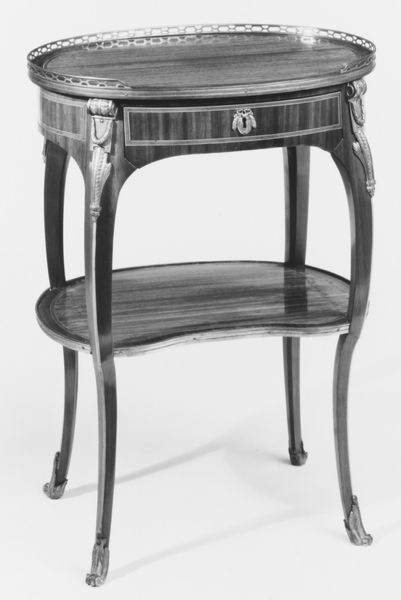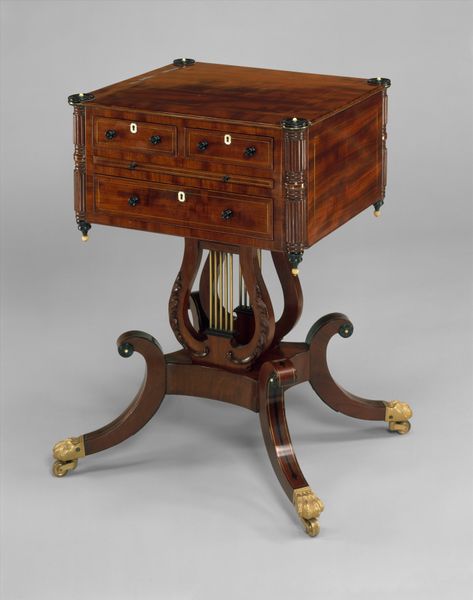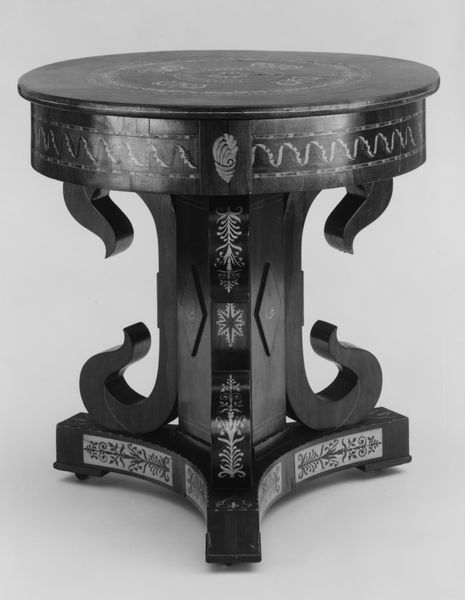
carving, wood
#
neoclacissism
#
carving
#
furniture
#
wood
Dimensions: 31 7/8 x 21 x 13 5/8 in. (81 x 53.3 x 34.6 cm)
Copyright: Public Domain
Curator: At first glance, this seems like an object of surprising utilitarian grace! Editor: Indeed. What we have here is a “Work Table” crafted sometime between 1805 and 1815 by the workshop of Duncan Phyfe. Curator: Note the specific kind of wood chosen for this purpose—the grain looks absolutely gorgeous up close—and the intensive carving. The lines of production really seem to blend high-end artistry and artisanal skill. Editor: It reflects the Neoclassical tastes prevalent at the time, certainly. Furniture like this acquired a social significance, speaking volumes about the owner's affluence and position in society. Think of the status conferred upon such a person who owns this unique piece. Curator: The feet—with those unexpected carved paws, they're evidence of elite consumption and luxury at that time. It almost seems as if function comes second to displaying status, though it’s obviously built for a practical purpose. Editor: You are probably right. Yet that very fusion of function and status played a significant role. Owning such items dictated particular practices of displaying art in drawing rooms. These drawing rooms effectively served as social stages to enact refined roles. Curator: The joinery must have been carefully attended to— the hinges and drawers, for instance, all point towards intensive craftsmanship and assembly in every component! Editor: Agreed. Consider the political backdrop, too—the new republic finding its feet, literally, designing and implementing itself via various types of design. Curator: And how that project depended so significantly on the skillful artisans themselves— they supplied their wares to furnish that new American stage of public life, quite tangibly. Editor: Precisely! In a nutshell, it gives an insight into both societal status and the role of artistic creativity and ingenuity during the late 18th and early 19th centuries. Curator: Examining such design encourages us to challenge boundaries: from “high” to ‘“low” design, perhaps to “art” and craft itself. Editor: Agreed! The table prompts us to remember how cultural tastes are often interwoven within broader histories.
Comments
No comments
Be the first to comment and join the conversation on the ultimate creative platform.
